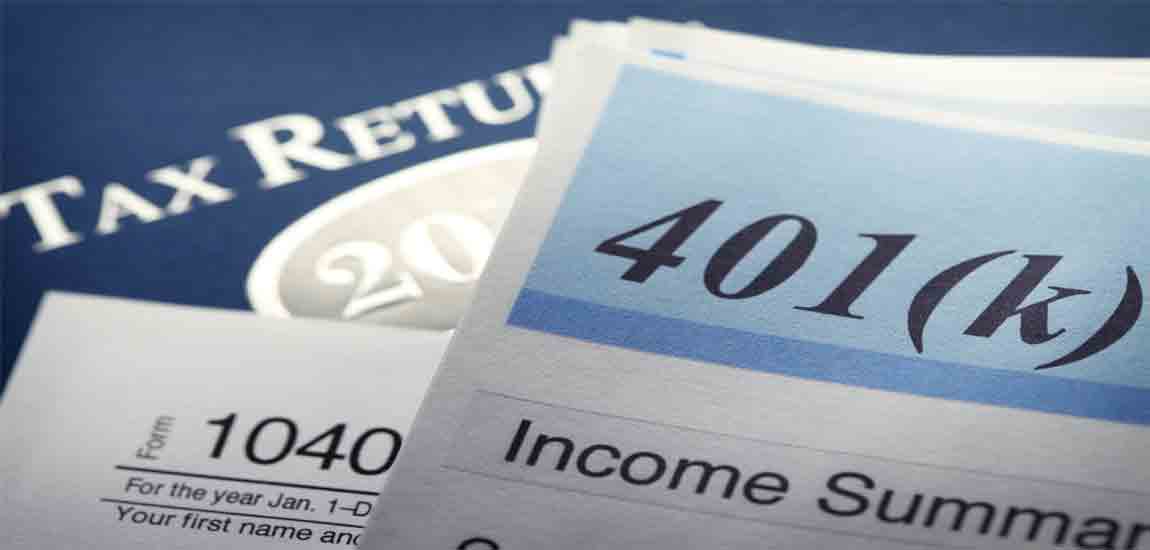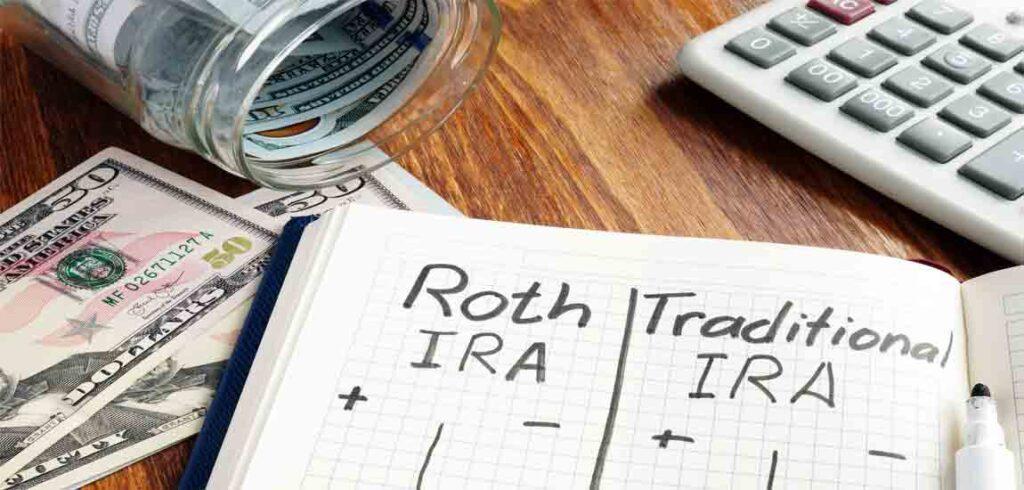


Are you thinking about your retirement plans? Many of us before joining a new employer, do not pay attention to whether the employer has a well set up retirement plan for their employee? In your long-term tax planning as well as to secure your retirement future this could be a very important option to consider. In this blog, we are going to discuss, types of retirement tax savings plans, your contribution limits, and your withdrawal and transfer options.
Investing in your retirement saving plans helps you minimize the overall income taxes that you will pay to IRS in long run. You have the option to set up your own retirement plan (IRA) or your employer can help you in this regard. In this blog, we will be discussing an employer-sponsored retirement saving and tax deferral plan.
Employer-sponsored retirement saving plans
401(k) plan is a retirement saving and a tax deferral plan. However, this is an employer-sponsored retirement saving plan. An employee can contribute to this plan, and the employer may match the employee’s contribution to the plan.
401(k) plan is an investment plan. The plan is established by an employer for the benefit of its employees. Under this plan, generally, the employee and the employer both contribute. The amounts contributed are invested in the financial market under the responsibility of the employer.

An employer can establish either a “defined contribution plan” or a “defined benefit plan.” Under the defined contribution plan, the employer is only responsible for his contribution to the plan. While under the defined benefit plan, the employer is also responsible for the specific benefits which are predetermined, to the employee after the employee retires. Under the defined benefit plan the employer takes the risks of your total investments in the retirement account, and he agrees to provide you a specified pension amount for the rest of your life after you retire.
Traditionally the defined benefit plan used to be popular in the government sectors and some private-sector employers also used to offer this plan usually only contributed by the private sector employer. A defined benefit plan is a great option, but not many employers offer this today. Hence in our discussion will be focusing only on the defined contribution plan.
The tax benefits of the 401(k) plan depend on the type of plan. The following are the basic two types of 401(k) plans.

Traditional 401(k) plan
This plan was introduced and made available to employers in 1978.
Under this plan, the employee contributes his/her pre-tax income. That means the employer deducts this money from the employee paycheques before any income tax is deducted for the pay. The employee gross income is reduced to the extent of the employee contribution during the period. The employee pays lower income tax on the reduced income. However, the employee pays income tax when he withdraws money from the plan. Which generally happens when the employee retires. This is basically a tax deferral plan.
Roth 401(k)
This plan was introduced and made available to employers in 2006.
Under this plan, the employee contributes his/her after-tax money. That means the employer deducts this money from the employee paycheques after any income tax is deducted from the pay.
Generally, very few employers offer the Roth Plan. If an employer offers both the plans, then an employee can choose either one or a mix.
401(k) Traditional Vs. Roth plan
Any income/gains earned on the investments either under the Traditional or Roth plan are not taxable in the hands of the employee in the year it is earned.
The benefit of a 401k plan
Under the traditional plan, the amounts contributed by you and your employer is not taxable. For example, your employer has agreed to pay you gross wages of 100k/year. Your employer will also contribute $8,000/year to your 401k plan. In other words, the total money including the benefits you will get from your employer is $108k/year ($100k + $8k). Assuming you also want to contribute $8,000/year to your 401k plan. In your tax return for the year, you will only pay income tax on your wages of $92k i.e. $100k minus your contribution of $8k. You saved income tax of $16k ($8k employer contribution + $8k employee contribution). You did not pay income tax on $16k that went to your retirement investment. Now, your employer will invest your $16k retirement to the stocks/financial market, and the income or gains on this investment will also not be taxable.
Your principal investments and any income or gains on this investment will only be taxable in the year you withdraw and you have to pay income tax at that time.
So the real tax savings if from the tax deferral. Assuming that today you are paying 30% tax on your income. You are above the base level tax bracket. When you retire your tax bracket might be 15% and hence you will save 15%(30% – 15%) income tax on your $16k investment plus on any income or gain. Please visit our “Latest News” for tax brackets.
Contribution limit
The contribution limit is the combined limit for both the Traditional or under the Roth plan. The limit described below is applicable for the tax year 2021. This limit is adjusted for inflation by IRS every year.
Bothe the above limits apply to an employee who is under the age of 50. For employees reaching the age of 50 or over, an additional $6,5000 is added to the above employee and employer’s limit.
Withdrawal limitations

Investing in a Traditional 401(k) plan will not only save you taxes (tax deferral) but also provide you other benefits. The benefits include as to use a certain amount as a down payment when you are buying your first house, retiring worry-free, inculcating saving habits, and working as your security deposit if in case of any future financial stress arises.
Roth is another great tool that helps you reinvest your tax-free investment income and helps you retire with confidence.
What is the difference between 401(k) and IRA?
As discussed above 401(k) plan is a retirement savings planning and tax deferral plan. Similar to this plan is also called “IRA”. IRA is an Individual Retirement plan. The major difference between a 401(k) plan and an IRA is that the 401(k) plan is set up by your employer while the IRA plan is set up by yourself. To learn more about the Individual Retirement plans in the United States, please visit our other blog “IRA”.
Notes to Canadian Resident with US income and 401(k) Contribution
Subject to certain conditions, your contribution to 401(k) is deductible from your income in the United States and in Canada when you report your US income on your Canadian Tax return in the year in which you have contributed. However, the extent of the 401(k) deductions you claim on your Canadian tax return will reduce your RRSP contribution limit accordingly. Different rules apply to your IRA contribution and are not deductible on your Canadian tax return.
Can I transfer my 401(k) to IRA?
The answer is “Yes.” You can rollover your savings in 401(k) to an IRA without paying any penalty. However, you need to deposit the money you rolled over into your IRA within 60 days to avoid any tax implications. It is always advisable that you transfer money from your 401(k) to your Individual Retirement Account directly. Usually, there is no charge for transferring your money from 401(k) to an IRA. However, some 401(k) administrators may charge a small fee.
The 401(k) plan is set up by your employer. Hence it is administered by your employer. Your employer chooses and decides the investment options. There may also be administration fees charged by the bank or institutions handling the investments in the 401(k) plan. If you have left that employer, it does make sense to take control of your investments.
Wondering if you are self-employed, or self-incorporated, can you 401K plan?
The answer is yes. You have the option to choose a solo 401(k) plan/independent 401(k) plan.
RKB Accounting, an US tax expert available to help you in your retirement planning, tax planning, and non-resident tax planning. Call us, as and when you need at 647-692-5677. We are available to serve you throughout the year!
RKB Accounting has expertise in cross-border taxation and has been providing accounting and taxation services for the last fifteen years in Canada and USA. RKB services include incorporating a business on both sides of the border, bookkeeping, sales tax, payroll, and corporate and personal income tax. RKB’s expertise includes cross-border tax planning, long-term tax planning, helping business start-ups, business structure planning, and resolving complex tax matters. RKB a CPA(Delaware), CA(India), and CIA(USA) has over 25 years of experience in accounting and taxation in dealing with various countries in the world.
Disclaimer: Information in the blog/post/article has been presented for a broad and simple understanding. This is not legal advice. RKB Accounting & Tax Services does not accept any liability for its application in any real situations. You need to contact your accountant or us for further information.